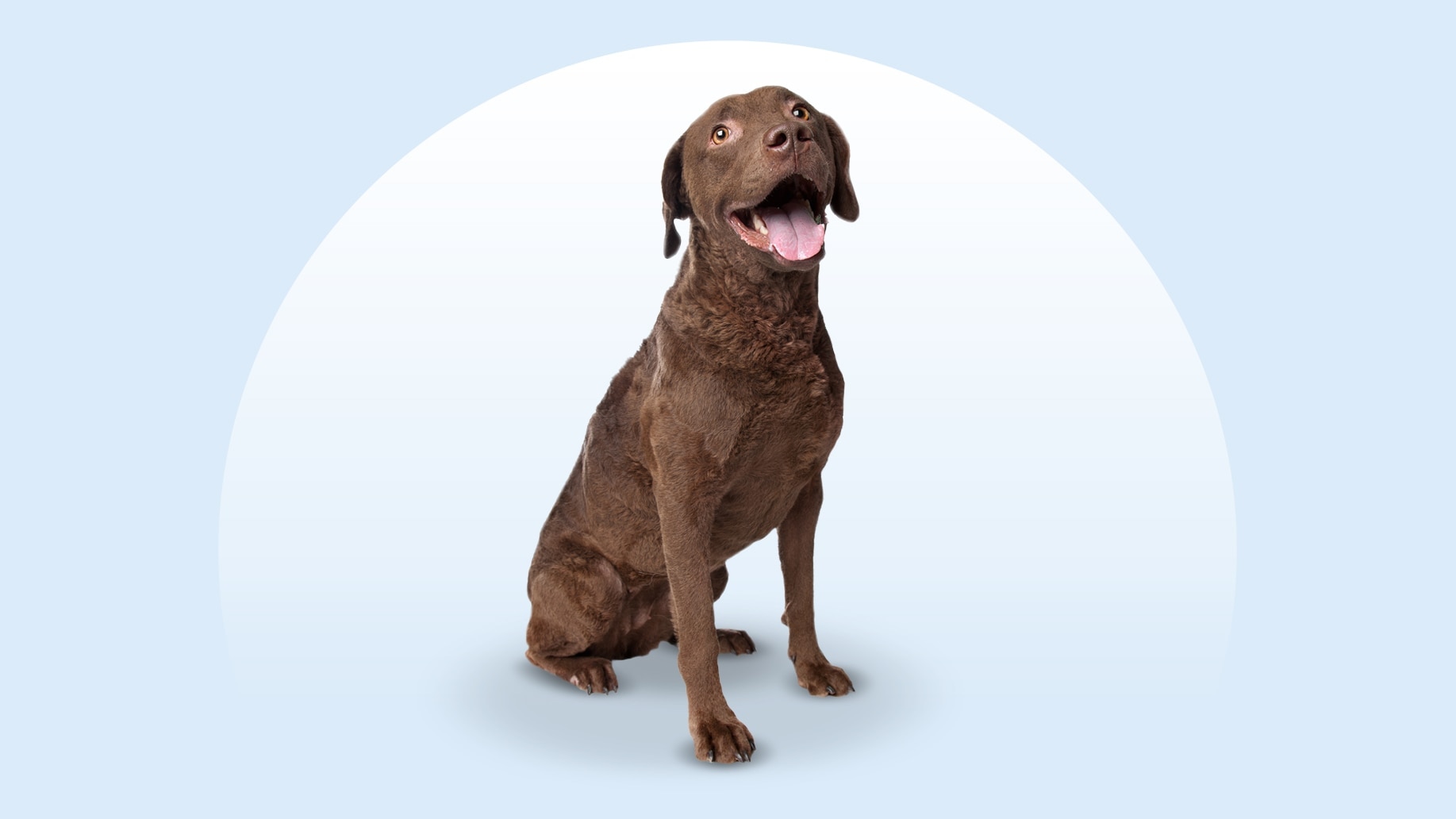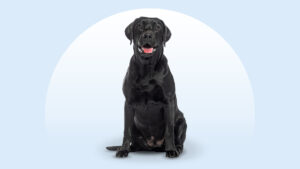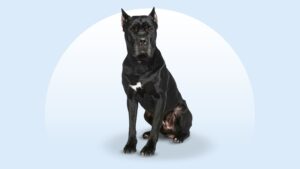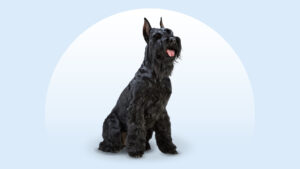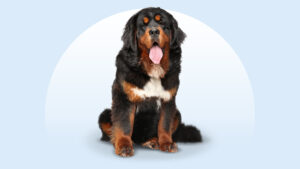Chesapeake Bay Retriever
Updated December 16, 2025
Chesapeake Bay Retriever
Updated December 16, 2025
Loyal and bright, the Chesapeake Bay Retriever believes every day is an adventure. So, why aren’t you out on the water exploring right now? Explain to this pup that you have to work, but promise lots of morning and evening exercise, and a boatload of weekend exploits.
Reserved, Sporty, Warm-Hearted
55–80 pounds
21–24 inches
10–13 years
Brown, Dark Brown, Dark Deadgrass, Deadgrass, Light Brown, Light Deadgrass, Sedge, Tan
You don’t have to have a boat, a bucket of crabs, and a can of Old Bay to adopt a Chesapeake Bay Retriever—but it wouldn’t hurt.
This pup with a heart of gold is the state dog of Maryland, where they were named for the body of water smack dab in the middle of the state. And while a Chessie, as they’re nicknamed, won’t partake in the Old Line State’s unique maritimecuisine, but they will hop on that boat. A true explorer and lover of the great outdoors, this kind pup makes every day an adventure.
Chesapeake Bay Retriever Characteristics
Chesapeake Bay Retriever Appearance
Chesapeake Bay Retrievers have a waterproof, wavy coat, and their amber eyes reflect their intellect. They come in a handful of colors reminiscent of Maryland nature.
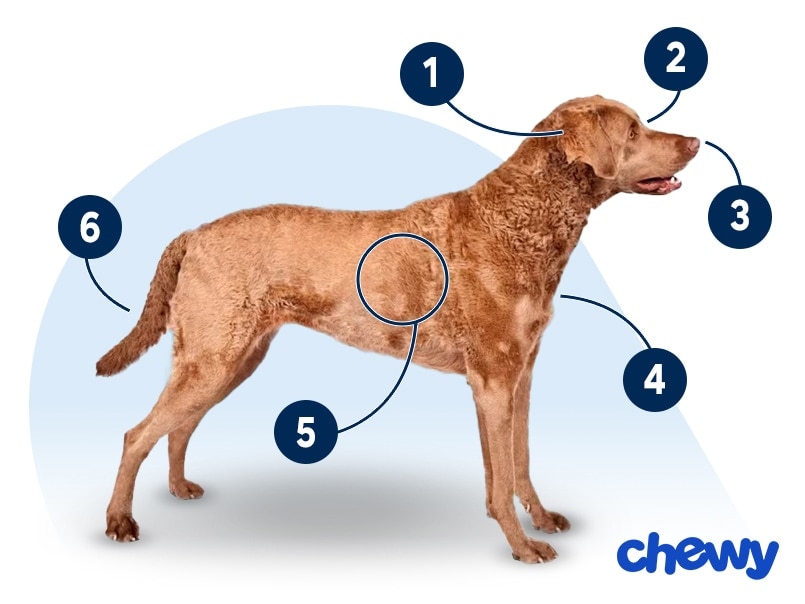
- Ears
A Chesapeake Bay Retriever’s ears are small, floppy, and high on the head.
- Eyes
Their eyes are set wide apart and are varying shades of yellow and amber.
- Nose
The Chessie nose is liver (a light brown and gray combo) or brown.
- Coat Length
The Chesapeake Bay Retriever has a double coat; the outer coat is thick, short, and oily, while the undercoat is dense, curly, and fine with a woolly feel.
- Coat Color
Chesapeake Bay Retriever colors may be any hue of brown, sedge (red hues), or deadgrass (yellow-tan hues).
- Tail
The Chessie tail is medium-length and thicker at the base, with possible feathering at the tip.
Chesapeake Bay Retriever Temperament
Chesapeake Bay Retrievers are poster dogs for the Great Outdoors. Pet parents who can’t possibly understand why anyone would want to be cooped up inside all the time will find this breed to be the perfect family dog.
With their high energy level, Chessie dogs thrive on varied activities, and they need pet parents who can keep up. In this way, Chessies are a lot like other retriever breeds, like the popular Labrador and Golden Retriever.
But while Labs and Goldens are furry extroverts, Chesapeake Bay Retrievers can be reserved around strangers. Don’t take that the wrong way—these pups are kind-hearted, and once they trust you, they’re loyal for life.
Outside, Chessies are all energy. But at home, they tend to be a quiet, affectionate companion who’ll likely follow you from room to room until it’s time to go for another adventure.
How to Care for a Chesapeake Bay Retriever
Chesapeake Bay Retriever dogs need a lot of daily exercise, but grooming this breed is usually simple.
Grooming
Training
Diet
Exercise
Environment
Chesapeake Bay Retriever Health
The average Chesapeake Bay Retriever life expectancy is 10–13 years. Here are some health issues to be aware of.
- Bloat and gastric dilatation-volvulus (GDV): Like many deep-chested breeds, these dogs are prone to a life-threatening condition called bloat. It occurs when the stomach gets distended with air and/or food. A serious complication of bloat is when the stomach twists on itself, cutting off blood supply to the organs. This is gastric dilatation-volvulus, and symptoms include abdominal distension, restlessness, and dry heaving. If you notice these signs, go to the vet immediately.
- Cataracts: Cataracts are a common eye problem, and they can be hereditary. The most common symptom is a cloudy eye. Surgery is the go-to treatment.
- Degenerative myelopathy: Degenerative myelopathy is a neurological disease that affects the spinal cord; it causes problems with breathing, vocalizing, and eating, and it slowly weakens then paralyzes the back legs. Keeping your pup at a healthy weight and active as long as possible may help slow the progression. There is no treatment to reverse it, but physical therapy may help. If you notice anything unusual with your Chessie, like lameness or stumbling, visit your veterinarian.
- Exercise-induced collapse: Chessies are prone to exercise-induced collapse, usually during or right after intense exercise. Preventive treatment involves avoiding excessive exercise and ensuring that your dog is well-hydrated and doesn’t become overheated.
- Follicular dysplasia alopecia: Alopecia, or hair loss, is a common condition in dogs, but follicular dysplasia alopecia is genetic and caused by a problem in the follicles’ structure. While there’s no treatment available, your vet can help you manage it.
- Hip dysplasia: Hip dysplasia develops during puppyhood when the ball and socket of the hip joint doesn’t align well and becomes looser than normal. Signs include limping, and treatment might involve weight loss, reduced activity, joint supplements, physical therapy, pain medication, or surgery.
- Progressive retinal atrophy (PRA): PRA leads to blindness in dogs, and while there is no cure, pups who lose their eyesight tend to adapt well and can still live full, happy lives.
- Von Willebrand disease: Chesapeake Bay Retrievers are susceptible to von Willebrand disease, a bleeding disorder where the blood doesn’t clot properly. Your veterinarian can test your dog for this.
Chesapeake Bay Retriever History
Descendants of the Newfoundland, Irish Water Spaniel, and other pups, the Chesapeake Bay Retriever was bred in the 19th century by people who wanted canines who could help retriever water fowl.
The breed takes their name from the Chesapeake Bay, a body of water that borders Maryland and Virginia, where they hunted migratory ducks and geese. Their waterproof double coat, strong legs, and webbed paws enabled them to withstand the elements in the field.
Chesapeake Bay Retriever puppies can cost thousands of dollars. If you choose this route, pick a responsible breeder.
You can also adopt a Chesapeake Bay Retriever. Check out a Chesapeake Bay Retriever rescue like Chesapeake Bay Retriever Relief & Rescue, keep an eye out at your local shelter, or search Chewy’s database of adoptable dogs in your area.
